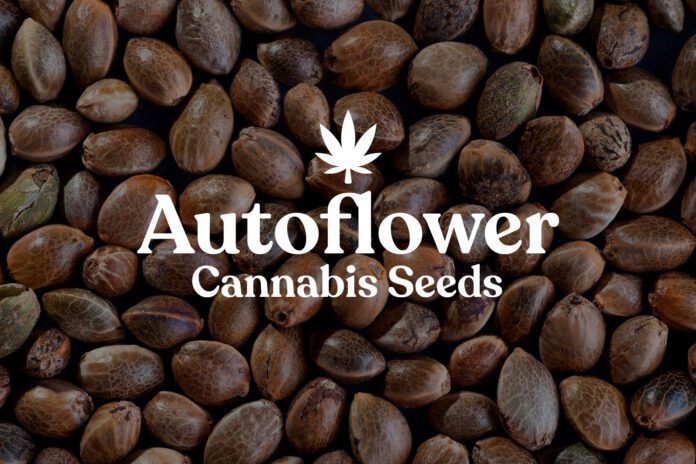Growing autoflowering cannabis seeds can be straightforward and rewarding if you follow the right steps. In this comprehensive guide, we’ll walk you through 14 essential aspects of cultivating these unique plants, from selecting the best strains to mastering the art of harvest. Whether you’re new to growing or looking to refine your skills, this article has all the information you need to produce healthy, potent autoflowering cannabis plants.
Table of contents
- 1. Understanding Autoflowering Cannabis Seeds
- 2. Selecting the Best Autoflower Strains
- 3. Preparing for Planting
- 4. Necessary Equipment
- 5. Planting Autoflowering Cannabis
- 6. Watering Your Plants
- 7. Lighting Requirements
- 8. Nutrient Management
- 9. Temperature and Humidity Control
- 10. Training Techniques
- 11. Pest and Disease Management
- 12. Maximizing Yield and Potency
- 13. Harvesting Autoflowers
- 14. Common Mistakes to Avoid
So, why choose autoflowers over traditional photoperiod strains? Let’s find out.
1. Understanding Autoflowering Cannabis Seeds
What Makes Autoflowers Different?
Autoflowering cannabis plants are unique because they automatically transition from the vegetative stage to the flowering stage without needing changes in the light cycle. This is due to their genetic heritage from the Cannabis ruderalis species, which evolved in harsh environments with short growing seasons. Unlike photoperiod strains, which require specific light schedules to flower, autoflowers thrive with consistent light exposure.
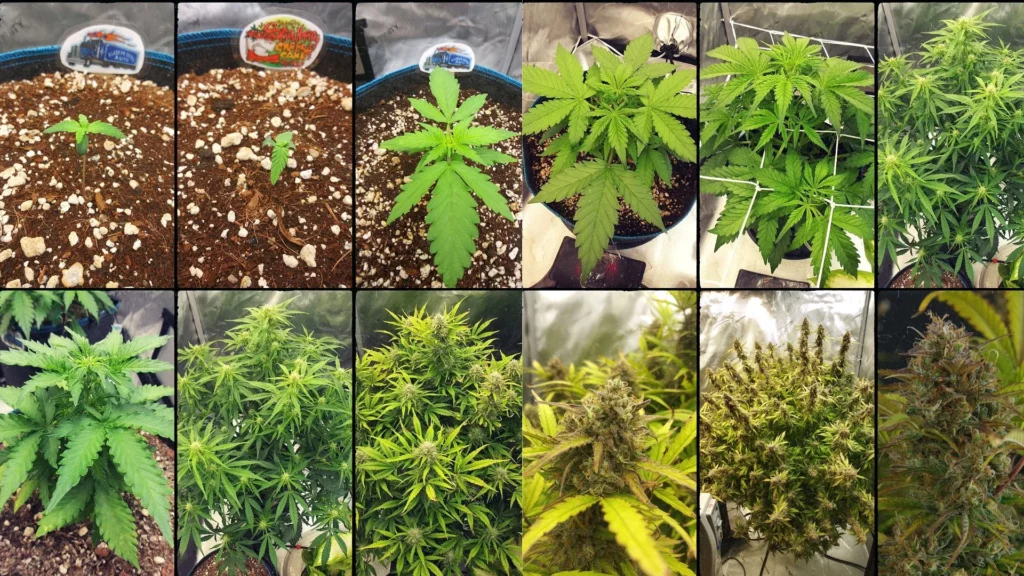
The Life Cycle of Autoflowering Cannabis
The life cycle of autoflowering cannabis is incredibly swift. Typically, these plants take about 8-12 weeks from seed to harvest, making them perfect for growers looking for quick turnaround times. The life cycle can be broken down into four main stages:
- Germination (1-7 days)
- Seedling (1-2 weeks)
- Vegetative (2-4 weeks)
- Flowering (5-7 weeks)
2. Selecting the Best Autoflower Strains
Selecting the right strain is crucial for achieving the best results. Here are the top 10 autoflowering strains that are highly recommended:
Top 10 Autoflowering Strains
- Amnesia Haze – Known for its uplifting effects and high THC content.
- Blue Dream – A balanced hybrid with a sweet berry aroma.
- Northern Lights – Renowned for its resilience and high yields.
- Gorilla Glue – Famous for its potent effects and sticky buds.
- Girl Scout Cookies – Offers a euphoric high and dessert-like flavor.
- Zkittlez – Tastes like a rainbow with a powerful indica punch.
- White Widow – A classic strain known for its balanced effects.
- Sour Diesel – Energizing and fast-acting with a pungent aroma.
- Jack Herer – Celebrated for its clear-headed high and medical benefits.
- Pineapple Express – Tropical flavors with a creative buzz.

Additionally, Shayana Shop offers a fantastic selection of autoflowering strains to suit any grower’s needs. Check out their Real Amnesia for a reliable, high-yielding option that’s easy to grow. Brain Damage is another excellent choice for those seeking an intense experience with high THC levels. For a sweet, flavorful twist, try Frosty Gelato, known for its dense, frosty buds. Don’t miss out on Gorilla Cookies, a potent hybrid with the best of both worlds. Lastly, the Watermelon Punch provides a refreshing, fruity aroma with robust growth. All these strains are available at a discount, making it the perfect time to start your autoflowering garden.
Feminized Seeds for Controlled Growth
For those looking to grow cannabis with more control over the plant’s life cycle, feminized seeds are an excellent option. Feminized seeds ensure that every plant will be a flowering female, which is ideal for maximizing yield and potency. If you’re interested in learning more about growing feminized cannabis seeds, check out our article on Top Tips for Growing Feminized Cannabis Seeds.
3. Preparing for Planting
Before you start planting, it’s essential to gather the right materials and set up your growing space.
Selecting the Growing Medium
Autoflowers can be grown in soil, coco coir, or hydroponic systems. Soil is often the easiest medium for beginners, providing a buffer against nutrient imbalances. Coco coir offers a great balance between water retention and aeration, while hydroponics can deliver rapid growth if managed correctly.
4. Necessary Equipment
- Containers: 3-5 gallon pots are ideal for autoflowers.
- Lights: Full-spectrum LED lights are highly recommended.
- Nutrients: Use nutrients specifically formulated for cannabis.
- pH Meter: To ensure the pH levels of your water and nutrient solutions are optimal.
- Ventilation: Fans and filters to maintain airflow and odor control.
5. Planting Autoflowering Cannabis
Germination Techniques
To germinate your seeds, use the paper towel method or plant directly into the growing medium. The paper towel method involves placing seeds between moist paper towels, keeping them warm and dark until they sprout.
Transplanting Seedlings
Once the seeds have germinated and developed a small taproot, they can be transplanted into their final pots. Autoflowers don’t handle transplanting well, so it’s best to plant them in their final containers from the beginning if possible.
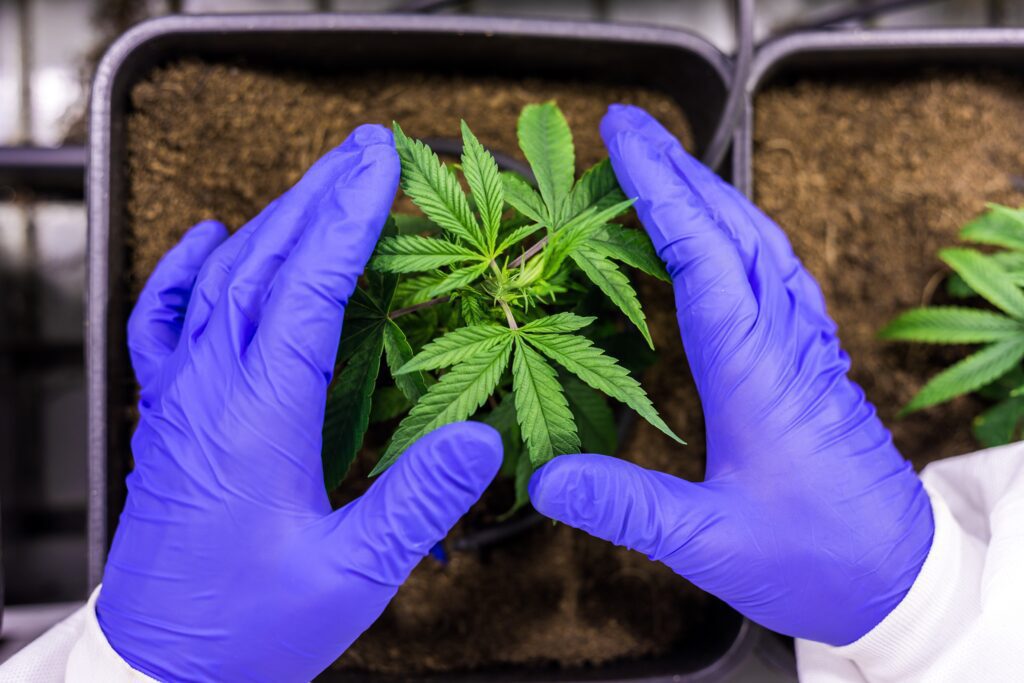
6. Watering Your Plants
Proper Watering Schedule
Autoflowers require a consistent watering schedule. Water them when the top inch of soil feels dry to the touch. Overwatering is a common mistake, so ensure your pots have good drainage to prevent waterlogged roots.
Signs of Overwatering and Underwatering
Overwatered plants will show signs of drooping and yellowing leaves, while underwatered plants will have dry, brittle leaves and slow growth. Adjust your watering schedule accordingly to maintain healthy plants.
7. Lighting Requirements
Ideal Light Conditions for Autoflowers
Autoflowers perform best with 18-24 hours of light per day. They are not dependent on the light cycle to flower, but more light usually translates to bigger yields.
Indoor vs. Outdoor Lighting
- Indoor: Use full-spectrum LED lights, positioning them about 18-24 inches above the plants.
- Outdoor: Ensure your plants receive at least 6 hours of direct sunlight daily. Choose a sunny spot with good air circulation.
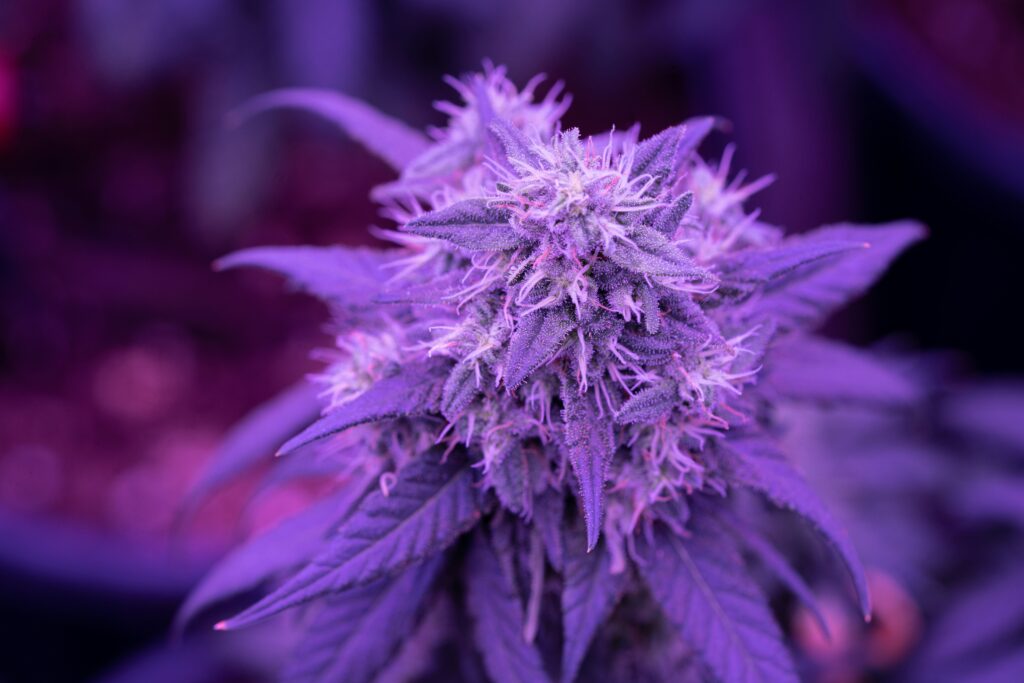
8. Nutrient Management
Essential Nutrients for Growth
Cannabis plants need three primary nutrients: nitrogen (N), phosphorus (P), and potassium (K). During the vegetative stage, higher nitrogen levels are beneficial, while flowering requires more phosphorus and potassium.
Nutrient Deficiencies and Solutions
Common deficiencies include yellowing leaves (nitrogen deficiency) and purple stems (phosphorus deficiency). Use a balanced nutrient solution and monitor your plants regularly to catch any issues early.
9. Temperature and Humidity Control
Optimal Temperature Range
Autoflowers thrive in temperatures between 68-77°F (20-25°C) during the day and slightly cooler at night. Extreme temperatures can stress the plants and reduce yields.
Managing Humidity Levels
During the seedling stage, maintain high humidity levels (60-70%). As the plants mature, gradually reduce humidity to 40-50% to prevent mold and mildew during flowering.
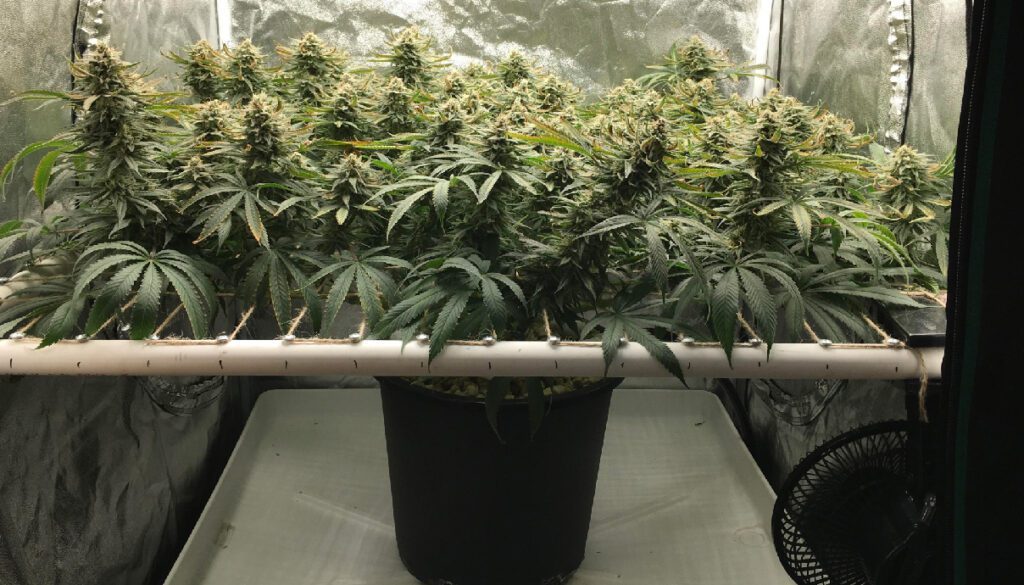
10. Training Techniques
Low-Stress Training (LST)
LST involves gently bending and tying down branches to create an even canopy. This technique maximizes light exposure and can significantly boost yields.
Pruning and Topping
While autoflowers are more sensitive to high-stress techniques like topping, light pruning can help improve airflow and light penetration. Remove lower leaves and small branches that receive little light.
11. Pest and Disease Management
Common Pests and How to Handle Them
- Spider Mites: Use insecticidal soap or neem oil.
- Aphids: Introduce beneficial insects like ladybugs or use insecticidal sprays.
- Fungus Gnats: Allow the soil to dry out and use sticky traps.
Preventing and Treating Diseases
- Powdery Mildew: Maintain low humidity and good airflow. Use fungicidal sprays if necessary.
- Root Rot: Ensure proper drainage and avoid overwatering.
12. Maximizing Yield and Potency
Tips for Boosting Yield
- Consistent Light Exposure: Ensure your plants get ample light.
- Training: Use LST to create an even canopy.
- Nutrients: Provide balanced nutrients tailored to each growth stage.
Enhancing Potency
- Genetics: Choose strains known for high THC or CBD levels.
- Harvest Timing: Harvest at peak maturity to maximize cannabinoid content.
13. Harvesting Autoflowers
Recognizing When to Harvest
Check the trichomes on your buds using a magnifying glass. Harvest when most trichomes are milky white with some amber, indicating peak potency.
Harvesting Techniques
Use sharp scissors to cut the branches, and handle the buds gently to avoid damaging the trichomes. Trim off large fan leaves before drying.
Post-Harvest Processing
Drying and Curing
Hang the branches upside down in a dark, well-ventilated area with 50-60% humidity. Once dry, cure the buds in glass jars, opening them daily to release moisture.
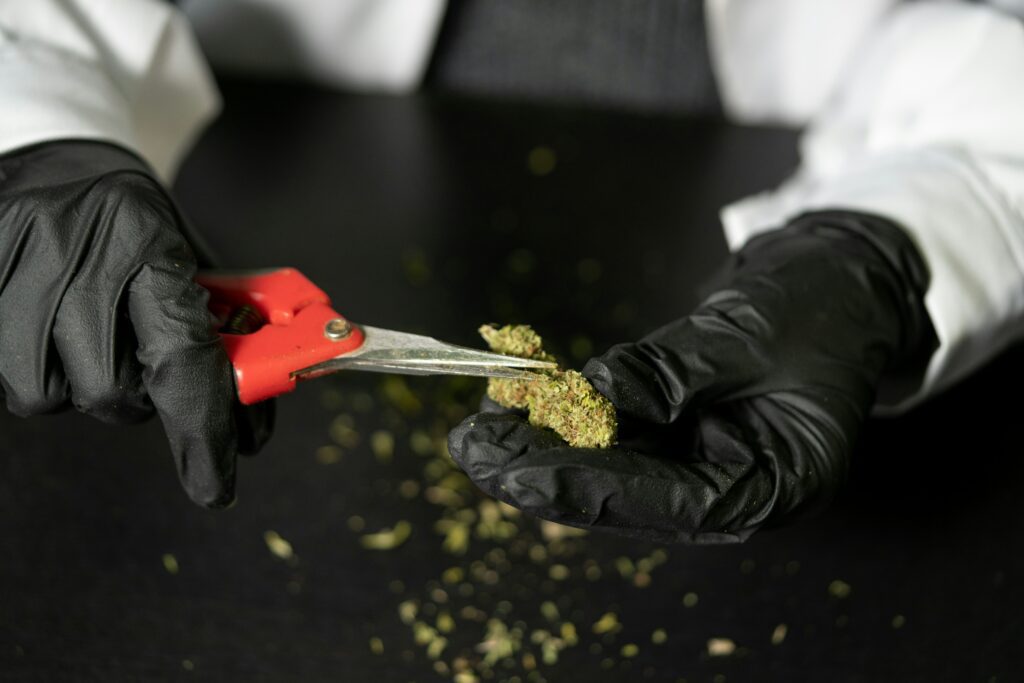
Storing Your Cannabis
Store your dried and cured buds in airtight containers in a cool, dark place to maintain potency and flavor over time.
14. Common Mistakes to Avoid
Beginner Pitfalls
- Overwatering: Stick to a proper watering schedule.
- Light Stress: Avoid exposing your plants to intense, direct light for prolonged periods.
- Nutrient Overload: Follow the recommended nutrient dosages and avoid over-fertilizing.
Advanced Grower Tips
- Advanced Training: Experiment with techniques like SCROG (Screen of Green) for higher yields.
- Environmental Control: Invest in climate control systems for optimal growth conditions.
- Select High-Quality Genetics
- Choose seeds from reputable seed banks to ensure the best quality.
- Opt for strains with high yields, potent THC or CBD levels, and desirable terpene profiles.
- Consider the growth characteristics that suit your grow space, such as height and flowering time.
- Optimize Your Grow Space
- Maintain an organized and efficient grow area with proper ventilation, temperature, and humidity control.
- Use high-quality grow lights, such as LEDs or HPS/MH lights, to provide optimal light intensity and spectrum.
- Ensure your grow space is adaptable to changes in plant size and growth stages.
- Use Quality Soil and Nutrients
- Invest in premium soil or a suitable growing medium tailored for cannabis cultivation.
- Use cannabis-specific nutrients and regularly monitor nutrient concentrations and pH levels.
- Adjust feeding schedules based on the growth stage and specific needs of your plants.
- Monitor and Adjust Regularly
- Continuously monitor your plants for signs of stress, nutrient deficiencies, or pests.
- Keep a close eye on environmental factors such as temperature and humidity, making adjustments as necessary.
- Be proactive in tweaking your care practices to ensure optimal growth and health of your plants.
Growing autoflowering cannabis can be a rewarding experience, offering quick and bountiful harvests with minimal effort. By following this guide, you’ll be well on your way to cultivating healthy, potent autoflowering plants. Remember, every grow is a learning opportunity, so don’t be afraid to experiment and refine your techniques.
Happy growing, friends! 🙌
